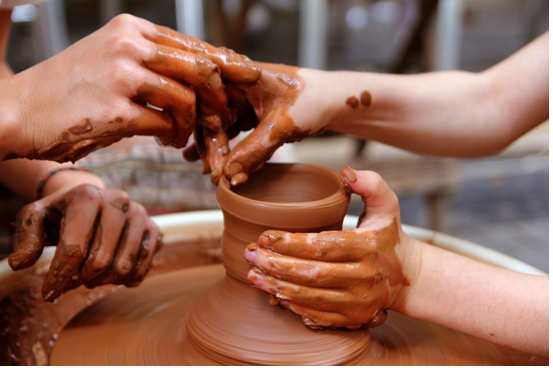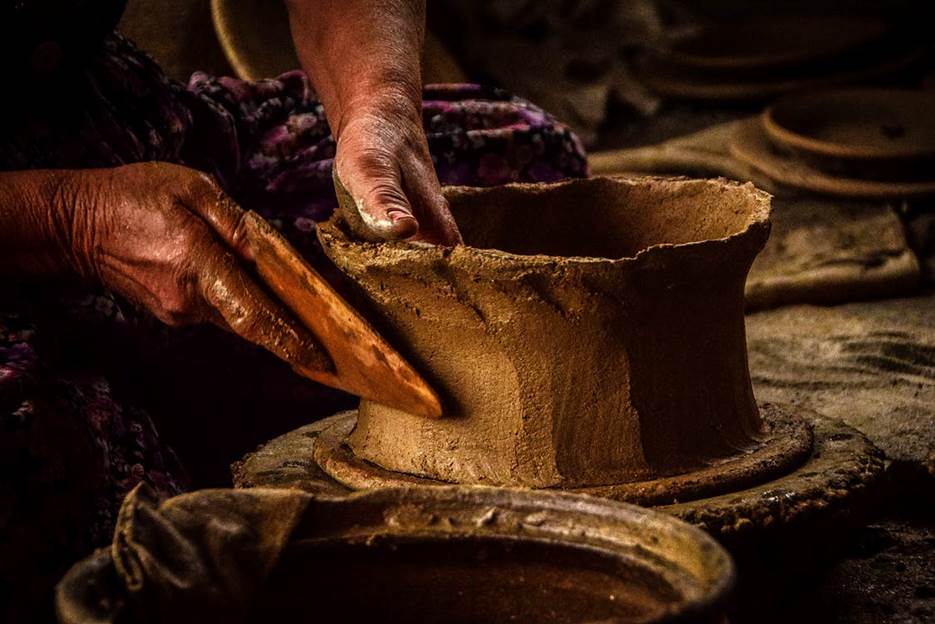Pottery is As Old As Civilization
Pottery is As Old As Civilization
After the wheel, pottery and handmade clay craft are two of the oldest human inventions. Not only is pottery our connection to the past, but from an archeological perspective, ancient pottery is a time capsule that allows us to peer into the lives of our ancestors
Apart from its historic significance , pottery is still an art that is thriving to this day. In fact, many people are surprised to hear that pottery is a practice that originated way back in the Pleistocene era and the early Neolithic period (circa 20,000 to 10,000 BC).
Archeologists have managed to successfully date pottery shards or even broken pots from different eras to determine this. Additionally, it is astonishing to note that pottery has been around before literacy in various cultures. As a result, much of the culture’s history is depicted in their art and pottery.
The durability of pottery has also meant that they can be one of the few clues found in archeological sites. Many civilizations have been found, named, and recognized based on the handmade clay crafts unearthed at the site.
But when and where did the first pot get made? Did they use one type of clay or all of them? If you have these questions and more, take a short look at the history of handmade clay crafts here:
History of Pottery by Type
Historic pottery does not contain clay types like ball clays or fire clays. Originally, only clay type was used. However, as different clay types were discovered, the art of pottery was expanded. Many archeologists found the following three types of clays.
Earthenware
This type of clay pottery has deep prehistoric roots. Pottery from that era was largely undecorated and hand-formed and fired in open bonfires or pits. Due to its porous nature, it wasn’t used for storing liquids. Additionally, it is one of the few clay pottery types that have been consistently used from the early Neolithic era to this day.
Stoneware
It is believed that the Chinese learned how to use stoneware first as it is a high fire clay type. In Europe, it wasn’t until later in the Middle Ages that such pottery started being made. Even then, not all European countries could work with this clay as the kilns were not developed enough to create such fine objects. As a result, Germany specialized in stoneware until advancements were made in the Renaissance era.
Kaolin Clay - Porcelain
Once again, the Chinese worked with kaolin clay to make porcelain first. However, they didn’t consider is different from stoneware. In 618 AD, during the Tang Dynasty, they learned how to get the white hue and translucency in the finished result. Till the 16th Century, porcelain was largely made in South East Asia. It wasn’t until the 18th Century that other countries mastered the art of working with kaolin clay porcelain.
History of Handmade Clay Craft by Region
You can also take a look at history by region according to its clay pottery. This means taking a look when different areas in the world started to learn how to work with clay . Here’s a brief look at it:
East Asia
The earliest piece of pottery was discovered in China inside the Xianrendong Cave that is situated in the province of Jiangxi. This piece dates back almost 19,000 to 20,000 years. Additionally, it is said that fine pottery started first in Korea, who introduced the art to the rest of the eastern hemisphere.
The Chinese also refined the art of making white and blue porcelain. These pieces were not only sought after but the recipe was also coveted. Unfortunately, European kilns were not as developed, and it wasn’t until the 17th Century that Germany mastered the art of porcelain.
South Asia
In South Asia, the Indus Civilization was the first that started showing signs of wheel-made pottery. This occurred from 5,500 BC to 3,500 BC. In this region, the oldest pottery type found was in the Lahuradewa dating back to 7,000 BC to 6,000 BC. It also helped date how old the pottery tradition was in South Asia.
Apart from prehistoric, rough pottery, there were also fine and luxury pottery items to be found as well. While most pottery pieces previously found were used for storage, in this site vessels, cups, lamps and dolls were discovered
Near East
In this region, it wasn’t until the 7th Century that pottery making actively began. Until kilns were developed, the people worked with other stone working materials like granite or alabaster. The invention of the pottery wheel occurred somewhere in 6,000 BC to 4,000 BC.
Already great artisans, the people here expanded on how pottery was traditionally made. Glazing became commonplace and pots were made for cooking, stands, and even rat traps. This is also when pottery production began to be undertaken by a group of potters.
Europe
In Europe, handmade clay craft started around 5,500 BC to 4,500 BC. In the Mediterranean region, pottery became more elaborate and larger. This was around the time when Greek culture had started developing and by 1,000 BC, pots were works of art. They often featured people as decorative motifs and depicted stories.
With the pottery wheel so widely used now, various shapes were explored, and pottery truly began to develop a unique style that was distinct from region to region.
Today, pottery is just as unique and distinct as it previously was. Given its rich history and its significance today, you can rest assured that this craft won’t be dying out anytime soon.




